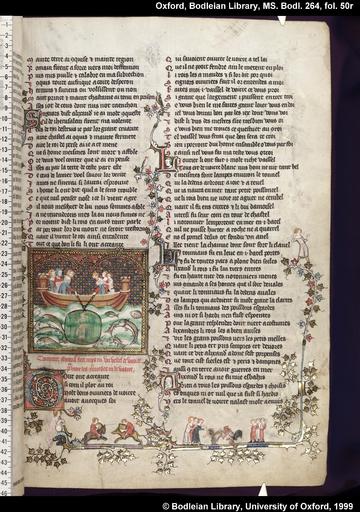Romance at Sea

Large bodies of water are basic to medieval romance, from the English Apollonius of Tyre to Norse romance sagas. However, despite the recent flurry of scholarship around in particular the Mediterranean, in which romance figures intermittently, the depths of this field are still to be discovered. The sea enables trade and exchange. However, while it can abet, it can also obstruct. Medieval romance depicts the sea as a place of precarity, of peril, in which the element of water is ungovernable, and in which individual and collective identities are bound to change.
The Medieval Romance Society is hosting three interrelated sessions exploring the relationship between romance and the sea. In addition to thinking about the sea as a platform for the exchange of romances, texts and ideas, these sessions also seek to understand the relationship between the human and the sea in romance. We welcome diverse interdisciplinary and theoretical approaches, including, but not limited to, ecocritical, posthuman, socio-historical, archaeological, and manuscript studies. Papers are invited to range across medieval cartography, considering bodies of water from the Atlantic to the Caspian Sea, within and indeed beyond Europe, as well as other bodies of inland water.
Session I: Romance at Sea: Amphibious Spaces
This session invites a consideration of the relationship between the human and the sea in coastal or island environments. These spaces, at the margins of both land and water, inform our understanding of the human in relation to the natural. How is landscape distinguished from seascape? What are the struggles and dangers of a coastal ecology and how do seaborne nations survive, or even, thrive? How does this marginal space drive narrative? Papers may explore a variety of themes, including, but not limited to: ecocritical approaches to land and sea; liminality and hinterlands; island and coastal ecologies; how the natural confines the human; kingship, expansion, and conquest, particularly in seaborne realms; shipwreck and drowning; all, of course, in or in relation to romance.
Session II: Romance at Sea: Sea Monsters
This session explores the representation of change and alterity through the lens of the sea, seeking to understand the disquiet surrounding the sea in romance. Why do people cross the sea? What kind of “monsters” can be found at sea? How does the sea manifest difference between masculinity and femininity, or human and inhuman, known and unknown? Papers exploring femininity and masculinity at sea are particularly welcomed, and may also include, but are not limited to: the inhuman, or deconstructions of the human; literary representations of the foreign; constructions of heroic and collective identity; exile; maritime space as a catalyst for change.
Session III: Romance at Sea: Over the Ocean
This session seeks to understand seaborne migration in two senses: the first being the transfer of literary motifs in romance; and the second being the exchange of romance manuscripts across the sea. How are literary ideas communicated between maritime cultures? Is there evidence of romance manuscripts crossing the sea? We particularly encourage an interdisciplinary approach, drawing on historical and literary methodologies to understand the role of the sea in engendering the spread of medieval romance and romance themes across medieval Europe and beyond. Papers may include but are not limited to: intercultural appropriation of literary ideas; migration and journeys across the water; ships and nautical trade; translations of romance texts; the exchange of romance texts, either manuscript or oral.
Please send abstracts of 250 – 300 words to Rebecca Drake at rebeccalouisedrake94@gmail.com by 15th September 2018.
Image: Oxford, Bodleian Library, MS. Bodl. 264, fol. 50r


